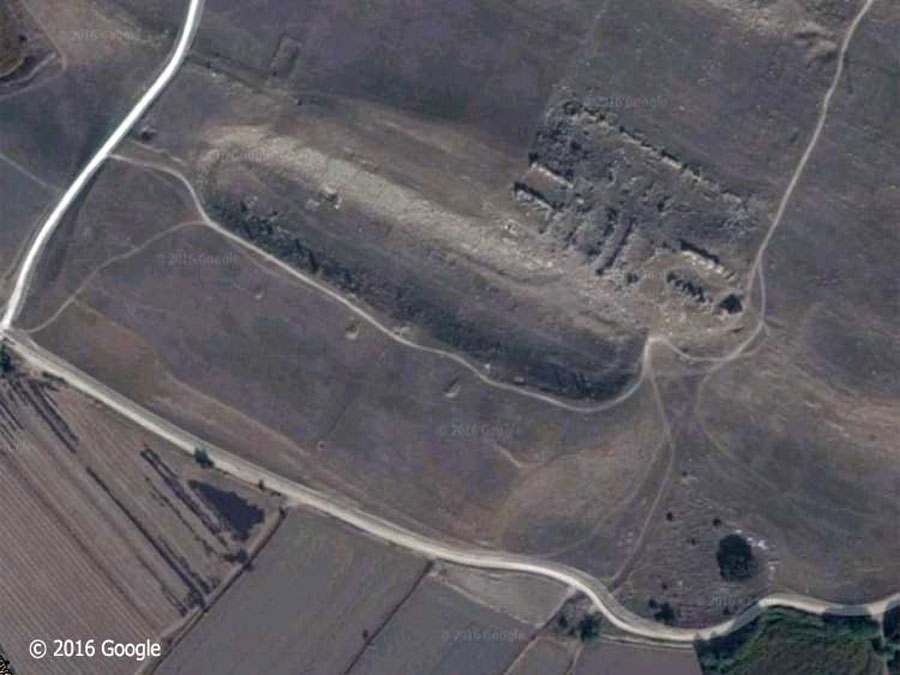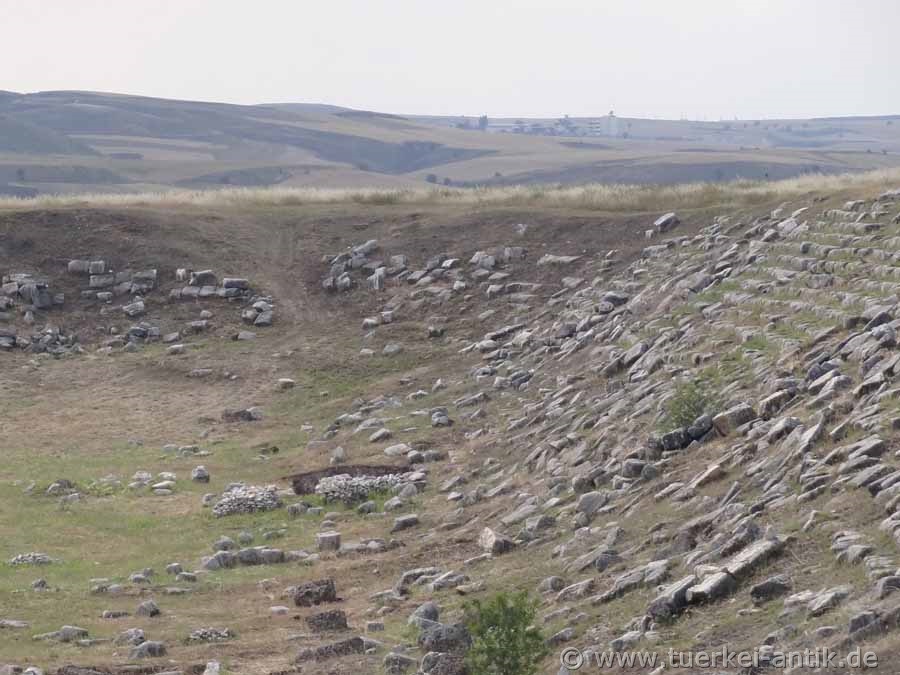 |
|
Ancient stadiums in Turkey Laodicea ad Lycum |
||||||||||||
|
|
|
|||||||||||
|
||||||||||||
|
The stadium of Laodikeia at Lykos (or Laodicea ad Lycum) was integrated under Vespasian (Roman emperor from 69-79 AD) or Titus (79-81 AD) into a natural depression at the southern end of the city. It is probably a horseshoe-shaped structure common in Roman times. The archaeologists of the University of Denizli conclude this from the flattened structure on the east side, especially since no remains of the benches can be found here. On the north-east side of the stadium are the huge remains of a gymnasium with a large swimming pool. The 133 x 75 metre complex was built according to an inscription on the occasion of the visit of Emperor Hadrian and his wife Sabina in 135 AD. In Hellenistic times, sports such as wrestling, boxing, discus and javelin throwing as well as running competitions found a wide audience. In the original sense of the word, a stadium was defined as an ancient Greek measure of length with a distance of 600 feet, which corresponds to a length between 165 and 196 m, depending on the regional measure of foot. The exceptional length of 280 metres is explained by a forecourt on which the young men of the gymnasium completed their daily training. |
||||||||||||
| The history of Laodicea ad Lycum: | ||||||||||||
|
Laodicea ad Lycum was an ancient city in the Phrygian region. It lies 6 km north of today's Denizli and 10 km south of Pamukkale, respectively Hierapolis, on the river Lykos (today Çürüksu Çayı), a tributary of the meander. First settlements in the area around Denizli are dated to about 4000 BC. The area was conquered or settled by Hittites, Phrygians, Greeks, Romans, Seljuks and Mongols. Laodikeia was founded by Antiochos II between 261 and 253 BC in place of an older settlement called Diospolis and named after his wife Laodike. In Roman times, the city was regarded as an economic centre. Marcus Tullius Cicero was in his year as proconsul in Cilicia 51/50 B.C. among other things responsible for the jurisdiction of the eight judicial districts of his province. This also applies to Laodikeia, the centre of a judicial district in the province of Asia. For this purpose he stayed in Laodikeia from 13 February to 15 March of the year 50 BC.
In Roman times Laodikeia was an important cotton growing area. Laodikeia is close (8 km) to the thermal baths of Hierapolis (today Pamukkale). A certain red plant root could be diluted with the water from Hierapolis and then turn black fabrics purple. More and more purple fabrics were produced in the Roman Empire in Laodikeia, e.g. the purple sails of Cleopatra. In the 1st century A.D. Laodikeia was severely devastated by earthquakes twice, under the emperors Tiberius and Nero, but recovered by its own efforts. |
||||||||||||
 |
||||||||||||
 |
||||||||||||
|
|
||||||||||||
|
|
||||||||||||
|
|
||||||||||||
|
|
||||||||||||
| Remains of the gymnasium above the stadium | ||||||||||||
| Photos: @chim | ||||||||||||
| Translation aid: www.DeepL.com/Translator | ||||||||||||
| Source: Wikipedia and others | ||||||||||||
|
|
||||||||||||

